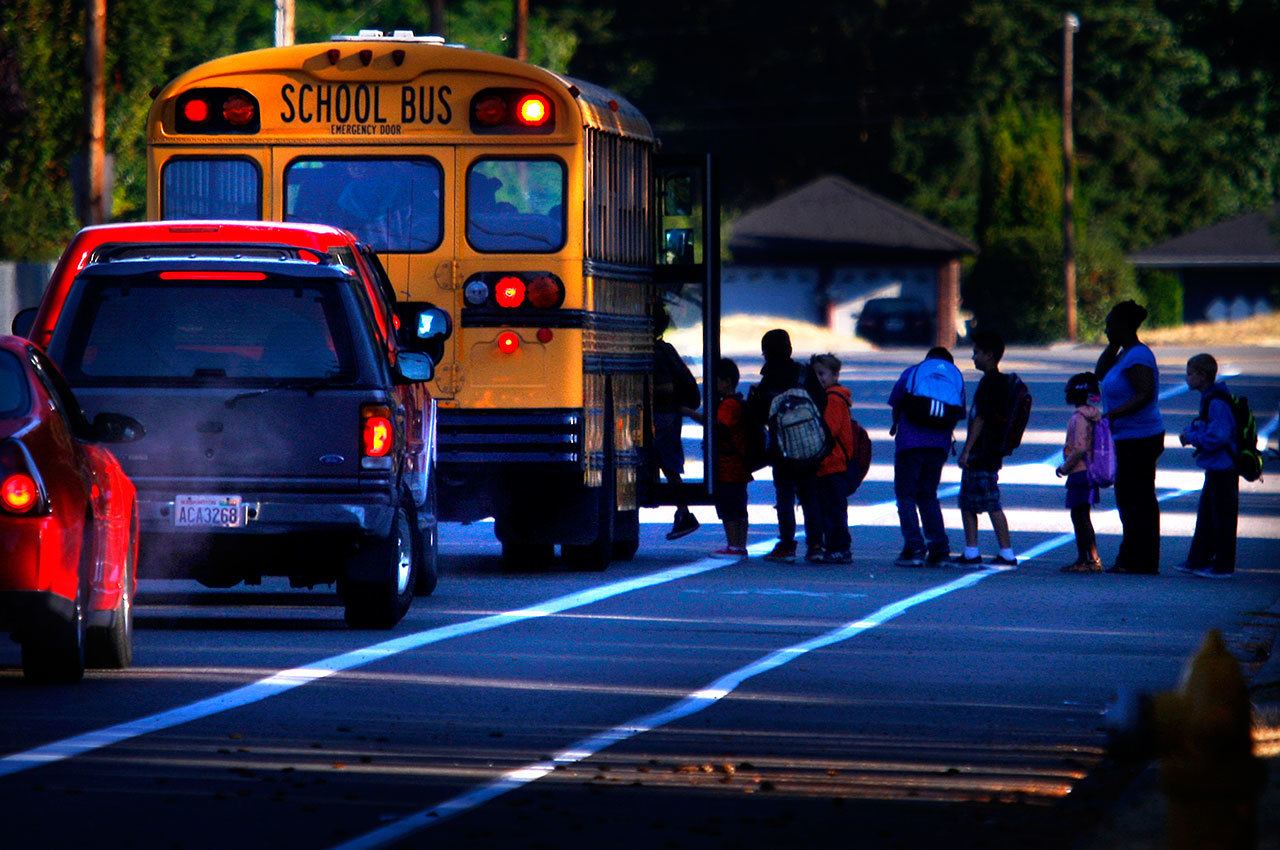By The Herald Editorial Board
The question isn’t if schools should adjust their daily start times so that older children start later in the morning; it’s now a question of when and how it gets done.
And one school district in the state is making that change. Seattle Public Schools, following a year of planning and preparation, has adjusted its schedule for all schools. Middle schools and high schools will start about an hour later than in previous years, while elementary schools will begin the day an hour earlier.
If the change results in Seattle children getting more sleep, the benefits should be quickly evident.
Both the Centers for Disease Control and Prevention and the American Academy of Pediatrics have advocated for later school start times for students, simply because older children aren’t getting enough sleep. The National Sleep Foundation recommends teens between 14 and 17 years get eight to 10 hours of sleep each night.
A recent CDC report showed more than two-thirds of students were sleeping seven hours or less, and nearly 4 in 10 were sleeping six hours or less.
The lack of sleep, the CDC and the pediatrics association have said, mean that children between 11 and 18 are more likely to perform poorly in school; be overweight; not get enough daily physical activity; suffer from symptoms of depression and engage in unhealthy behaviors, including drinking, smoking and using illicit drugs.
A CDC study released earlier this year raised other safety concerns, noting that insufficient sleep among teens is associated with a higher risk for accidental injuries from accidents caused by drowsy driving. Students who slept seven hours or less, the report found, were more likely to report injury-related risk behaviors, such as infrequent use of bicycle helmets and seat belts, drinking and driving or riding with a driver who had been drinking, and texting while driving, as compared to students who slept nine hours.
Other studies have reached similar conclusions, including a comparison made by the American Academy of Sleep Medicine in 2014 that looked at two counties in Virginia whose school start times were about a half-hour different. Between 2009 and 2010, the accident rate for teens was about 29 percent higher in the county with the earlier school start time than for students in the county with the later start time, the study found. The results were similar, 27 percent, between 2010 and 2011.
But adjusting school start times, parents, students and school officials have said, involves significant changes for the rest of the day for all involved, including for those students on sports teams or with after-school jobs, parents who rely on older children for afternoon child care and the costs involved in providing school district bus transportation.
Seattle Public Schools, the state’s largest school district, is working past those complications.
Sharon Peaslee, a former Seattle school board member writing for The Huffington Post, said Seattle worked past the objections by stressing the research on sleep to build public support for the change. Supporters then began to address the concerns over sports, child care and transportation.
Adjusting practice and game times, Peaslee said, was probably the biggest challenge, especially as the district worked to line up game schedules with other districts outside of Seattle, but a regional shift in game times was negotiated. And Seattle’s change may now help other districts make the same shift.
While child care will be a challenge for some families, Peaslee notes that some families who had to find child care for younger children in the mornings will now benefit from the earlier start time for younger students.
And bus schedule changes, Peaslee said, shouldn’t have to add to district costs, as the district swaps school start times among middle school and high school students with elementary school students. (Younger students, who typically have earlier bed times, have less difficulty getting adequate sleep.)
What will help with all of the above, Peaslee said, is a commitment from community nonprofits, the city’s parks department, its transportation department and others to assist with the changes.
As the benefits of Seattle’s shift in its school schedules become clear by providing greater health and safety and improved academics, other school districts in the state and in Snohomish County need to start their own discussions on how to make a similar change to the school bell.
Let’s all sleep on it.
Talk to us
> Give us your news tips.
> Send us a letter to the editor.
> More Herald contact information.

























